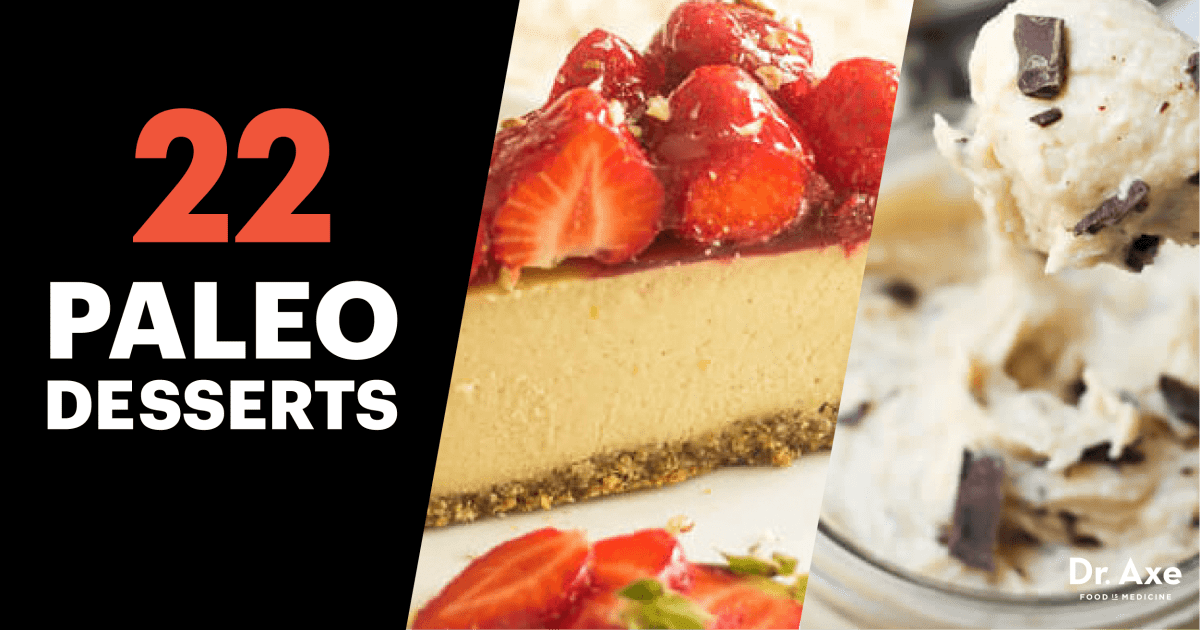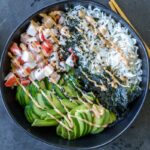Indulge your senses without sacrificing your health! Prepare to embark on a culinary journey into the surprisingly delicious world of decadent paleo desserts. Imagine rich, velvety chocolate mousse crafted from avocado, or light and airy cakes bursting with the natural sweetness of honey and vibrant seasonal fruits. This exploration unveils the secrets to creating intensely flavorful, satisfying desserts that align perfectly with a paleo lifestyle, proving that healthy eating doesn’t mean compromising on taste.
We’ll delve into the core ingredients, exploring their nutritional power and uncovering paleo-friendly alternatives. Discover adaptable recipes that cater to various dietary needs, master essential baking techniques for achieving perfect textures, and learn the art of visually stunning dessert presentation. From classic chocolate mousse variations to innovative seasonal fruit creations, this guide provides a comprehensive roadmap to crafting healthy, decadent paleo desserts that will amaze your taste buds and leave you feeling fantastic.
Recipe Variations & Adaptations
Paleo desserts, while naturally free from refined sugars and grains, offer a surprising level of versatility. By thoughtfully adjusting ingredients and techniques, you can create a wide array of decadent treats to suit diverse tastes and dietary needs, ensuring everyone can enjoy the rich flavors of healthy indulgence. This section explores variations on a classic chocolate mousse, adaptation strategies for common dietary restrictions, and a recipe showcasing seasonal fruits.
Chocolate Paleo Mousse Variations
Three distinct variations of a classic chocolate paleo mousse demonstrate the adaptability of this recipe. Each version maintains the core principles of paleo baking – utilizing natural sweeteners and wholesome fats – while offering unique textural and flavor profiles.
- Classic Dark Chocolate Mousse: This version uses high-quality dark chocolate (70% cacao or higher), unsweetened cocoa powder, and full-fat coconut milk for a rich, intensely chocolatey experience. The creamy texture is achieved by blending the ingredients until perfectly smooth and airy. A touch of vanilla extract enhances the depth of the chocolate flavor.
- Avocado Chocolate Mousse: Replacing some of the coconut milk with ripe avocado adds a velvety smoothness and a subtle creaminess. The avocado’s healthy fats contribute to a richer, more decadent texture, while its mild flavor complements the intense chocolate notes. This version is particularly vibrant in color, showcasing the avocado’s natural green hue subtly offset by the deep brown of the chocolate.
- Mocha Chocolate Mousse: For coffee lovers, this variation incorporates strong brewed coffee into the mousse base. The coffee’s robust aroma and bitter notes beautifully contrast the sweetness of the chocolate, creating a sophisticated and complex flavor profile. A sprinkle of unsweetened cocoa powder on top adds a final touch of visual appeal and chocolate intensity.
Adapting Paleo Desserts for Dietary Restrictions
Adapting paleo recipes to accommodate various dietary restrictions often involves simple substitutions. Consider these examples:
- Nut Allergies: Many paleo recipes rely on nuts for texture and richness. For those with nut allergies, sunflower seed butter, pumpkin seed butter, or tahini can often be substituted. Be mindful that the flavor profile might subtly change. Coconut flour can also replace almond flour in many instances, although the resulting texture may differ slightly.
- Dairy-Free Options: Coconut milk, full-fat coconut cream, and cashew cream (made by soaking cashews and blending them with water) provide excellent dairy-free alternatives in paleo desserts. These options add creaminess and richness without compromising the integrity of the recipe. Always check for any hidden dairy ingredients in your chosen chocolate or other ingredients.
Decadent Paleo Dessert with Seasonal Fruits
This recipe showcases the versatility of paleo baking by utilizing seasonal fruits, ensuring maximum flavor and freshness. This example uses summer berries.
Summer Berry Paleo Crisp
Ingredients:
* 1 cup mixed summer berries (strawberries, raspberries, blueberries)
* 1/2 cup almond flour
* 1/4 cup coconut oil, melted
* 1/4 cup maple syrup
* 1 teaspoon cinnamon
* 1/4 teaspoon nutmeg
Instructions:
1. Preheat oven to 350°F (175°C).
2. In a bowl, combine the almond flour, melted coconut oil, maple syrup, cinnamon, and nutmeg. Mix until a crumbly texture is achieved. The mixture should resemble coarse cookie crumbs.
3. Gently toss the mixed berries with a small amount of maple syrup to prevent them from drying out during baking.
4. Spread the berries in a small baking dish. Evenly crumble the topping mixture over the berries.
5. Bake for 20-25 minutes, or until the topping is golden brown and the berries are bubbly.
6. Let cool slightly before serving. The warm, slightly tart berries paired with the crunchy, spiced topping create a delightful contrast in textures and flavors. A scoop of coconut whipped cream adds an extra layer of decadence.
Step-by-Step Baking Techniques for Paleo Desserts

Mastering the art of paleo baking requires understanding unique techniques that compensate for the absence of traditional gluten and refined sugars. Success lies in careful attention to ingredient ratios, baking times, and the nuances of each dessert type. This section details the precise steps involved in creating light and airy paleo cakes, perfectly textured paleo brownies, and creamy, no-bake paleo cheesecakes.
Paleo Cake Baking Technique: Achieving Lightness and Airiness
Creating a light and airy paleo cake hinges on proper creaming of fats, careful incorporation of dry ingredients, and gentle handling of the batter. Overmixing leads to a dense, tough cake. The visual result should be a cake with a tender crumb, a soft texture, and a delicate rise.
- Creaming Fats and Sweeteners: Begin by creaming together softened coconut oil or ghee with your chosen paleo sweetener (e.g., maple syrup, honey, or coconut sugar) until light and fluffy. Imagine a pale, creamy mixture, almost like whipped butter. This process incorporates air, crucial for a light texture.
- Adding Eggs: Gradually add eggs one at a time, ensuring each is fully incorporated before adding the next. The batter will slowly thicken and become more emulsified. Picture a smooth, homogenous mixture, where the eggs are evenly distributed throughout the fat and sweetener.
- Incorporating Dry Ingredients: Gently fold in a mixture of almond flour, coconut flour, and any leavening agents (e.g., baking powder, baking soda). Avoid overmixing; a few gentle folds are sufficient to combine the ingredients. The batter should retain some airiness, not becoming dense or compact. The visual should be a light, fluffy batter with only minimal streaks of dry ingredients.
- Baking: Bake in a preheated oven at a moderate temperature (around 350°F or 175°C), checking for doneness with a toothpick. A toothpick inserted into the center should come out clean or with just a few moist crumbs. The baked cake should have a golden-brown top and a soft, springy texture when gently pressed.
Paleo Brownie Baking Technique: Achieving Perfect Texture
The key to perfect paleo brownies lies in the balance of moisture and fat, alongside precise baking time. Too much moisture leads to a gummy texture; underbaking results in a crumbly, dry brownie. The goal is a fudgy, moist, and slightly chewy texture with a crisp top.
- Melting the Fat: Melt coconut oil or ghee and combine it with your chosen paleo sweetener. The mixture should be smooth and homogeneous, like melted chocolate.
- Adding Wet Ingredients: Whisk in eggs and vanilla extract until fully incorporated. The mixture will slightly thicken but remain pourable. Imagine a rich, dark, glossy mixture.
- Incorporating Dry Ingredients: Gently fold in a mixture of almond flour, cocoa powder, and any other desired additions (e.g., nuts, chocolate chips). The batter should be thick but still pourable. It should have the consistency of thick fudge batter.
- Baking: Bake in a preheated oven at a lower temperature (around 325°F or 160°C) for a longer period, ensuring the brownies are cooked through but still slightly gooey in the center. The ideal texture is fudgy, not cakey. Overbaking will result in dry, crumbly brownies. The finished brownies should have a slightly cracked top and a fudgy interior.
No-Bake Paleo Cheesecake Technique: Achieving Creamy Perfection
No-bake paleo cheesecakes offer a refreshing alternative, requiring no oven time. The key is to create a smooth, creamy filling that sets properly. The visual result should be a creamy, rich cheesecake with a distinct layer separation between the crust and the filling.
- Preparing the Crust: Blend almond flour, coconut flakes, and melted coconut oil until it forms a crumbly mixture. Press this mixture into the bottom of a springform pan to create the crust. Imagine a uniformly pressed, light golden crust.
- Making the Filling: Blend full-fat coconut milk (ensure it’s well-chilled and the cream is separated from the water), cream cheese, paleo sweetener, and vanilla extract until completely smooth and creamy. The mixture should be thick and fluffy, resembling a very thick cream.
- Assembling the Cheesecake: Pour the creamy filling over the prepared crust and spread evenly. The filling should be smooth and level on top of the crust.
- Chilling: Refrigerate for at least 4 hours, or preferably overnight, to allow the cheesecake to set completely. The cheesecake should be firm and hold its shape when chilled.
Unlocking the potential of paleo baking opens a world of culinary creativity. By mastering the techniques and understanding the nutritional benefits of key ingredients, you can confidently craft decadent desserts that are both delicious and health-conscious. The journey from simple recipes to stunning presentations is a rewarding one, filled with the satisfaction of creating treats that nourish your body and delight your senses. So, embrace the art of paleo dessert making and prepare to redefine your perception of healthy indulgence.
Question & Answer Hub
Can I use other sweeteners besides maple syrup and honey?
Yes, other paleo-friendly sweeteners like coconut sugar or dates can be used, though their flavor profiles will differ. Experiment to find your preference!
How long do these desserts typically last?
Storage depends on the recipe. Most will last 3-5 days refrigerated, but some no-bake options might need to be consumed sooner.
Are all paleo desserts naturally gluten-free?
Generally yes, but always double-check ingredient lists to ensure no cross-contamination has occurred during processing.
Can I freeze paleo desserts?
Many paleo desserts freeze well. Allow them to thaw completely before serving for the best texture.


